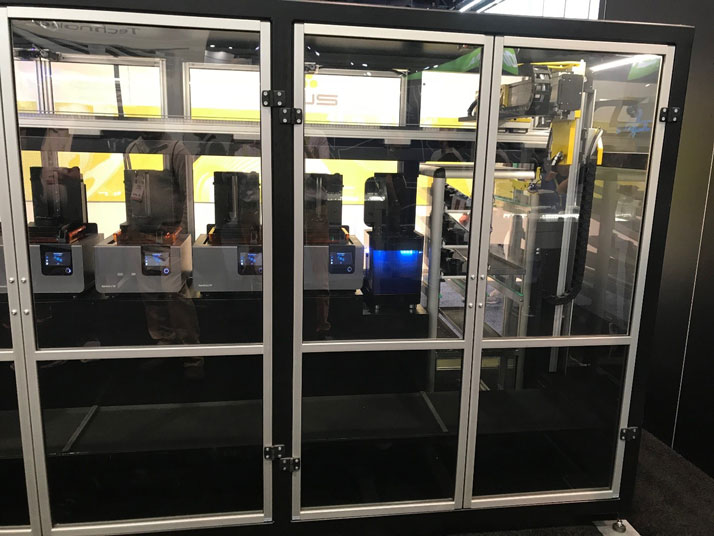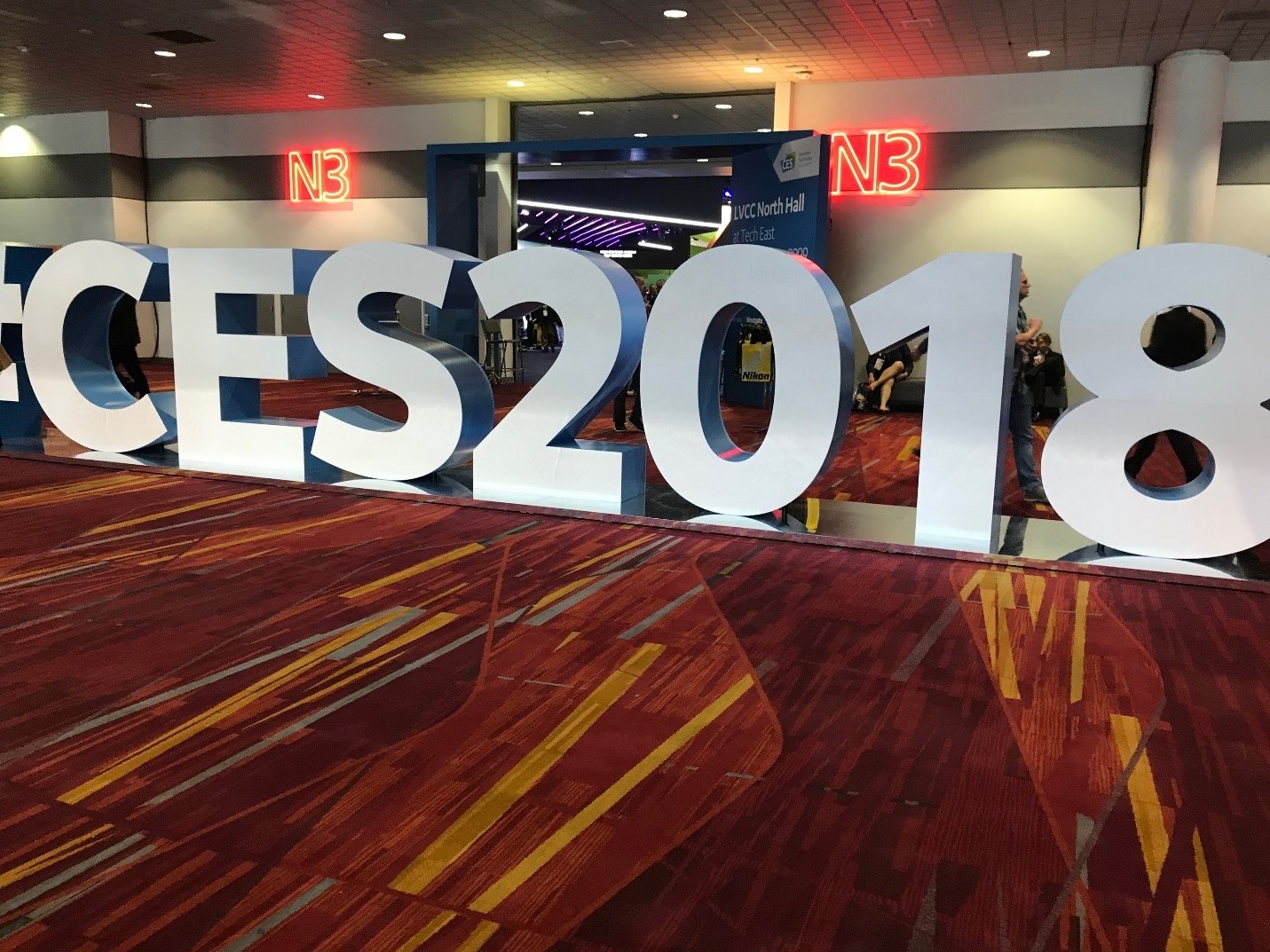Consumer Electronics Show 2018
General Impressions
This marked my first year attending CES (Consumer Electronics Show). For those who have not been, it can seem overwhelming. Looking at the numbers, CES drew over 4,000 exhibiting companies and more than 184,000 attendees. With so much to see, my two-day trip was not long enough to visit every one of the exhibitors. As the CTO for Simplexity Product Development, I was most interested in the types of products related to the technologies in which we specialize.
The IoT (Internet of Things) field showcased a vast number of products at the yearly tradeshow. IoT devices are certainly on the rise, and new technology development will only continue to grow at an exponential pace.
A Mechatronics Perspective
With the development, design, and engineering of mechatronics projects at an all-time high, CES is the perfect place to enjoy the future of next-generation design. As we look to the future of 3D printing, robotics, drones, and motors, we can’t wait to see how mechatronics will continue to evolve.
3D Printing
The 3D printing section of CES was well represented, but the hype around 3D printer seems to be cooling down. The distribution of 3D printing exhibitors showing off their 3D design capabilities seemed to be inversely proportional to the device price point. There were seemingly hundreds of companies showing off low-cost FDM machines. There were several SLA exhibitors, with former Simplexity client Formlabs having the largest exhibit in this class of device. Formlabs had a nice demo of a 3D printing production cell consisting of multiple SLA printers and a robot arm to unload prints. As price points increased, the exhibitor count dropped, with only a few companies demonstrating metal-capable laser sintering machines. An exhibitor that caught my eye located in the 3D printing area was the $4k laser cutter/engraver from GlowForge.
I have personally experienced this innovation in 3D printing. Recently, my son had braces put on, instead of taking mold impressions to get a model of his teeth, the orthodontist scanned his mouth with a 3Shape TRIOS intraoral scanner to generate a model. This technology is clearly ready for prime time.

Multiple companies were demonstrating 3D scanners based on photo stitching technology. This technology has made its way into the healthcare field and can be seen at an orthodontist office.
Robotics
The robotics section at CES had the widest range of both amazing machines, and some that I’ve seen before. The tradeshow had “robots” that were nothing more than screens on wheels, just like a Roomba. There were also, quite a few humanoid robots based on RC servo motors, some RC servo motors had entertaining behaviors and capabilities of real robotic systems.
From a robotics engineering standpoint, the STEM educational opportunities are plentiful. Educational robotic trends do well to capture my attention. However, the fact that there were probably more educational robotic exhibitors than commercially viable robotic products indicates that as a technology, robotics are very challenging to integrate into something useful.
One of the biggest splashes in the robotics section was the Forpheus ping-pong playing robotdemonstrated by Omron. This robot was an adept built robot that utilized Omron sensing technology to not only play ping-pong, but analyze the human opponent’s skill level, and adjust its level of play to match automatically. This integration of long existing robotic technology with more recent advances in sensing and Artificial Intelligence (AI) gives us a glimpse of the future.
A preview of how robotic automation technologies coupled with vision and AI might affect the mundane portions of our daily life was the Laundroid clothes folding robotic cabinet from Seven Dreamers. This cabinet priced at $16,000 takes a pile of laundry fresh from the dryer and returns a neatly stacked pile of folded laundry for each family member. While this technology may not save humanity, it sure looks like a great time saver.
Drones
The drone section was bigger than both 3D printing and Robotics together, with some drone exhibitors randomly scattered throughout the show. Drone exhibitors did a good job integrating camera systems to augment their IMU sensors to further stabilize flight and other flight control features. They also used camera systems for measuring the earth below. The standard quad-copter and the submersibles have very interesting technologies, although the submersibles were not as popular as the quad-copter drones. The submersibles may not have as many capabilities as flying drones, but I suspect that we’ll be seeing many more of these devices in the near future. We have barely scratched the surface of underwater exploration, and we are certainly in for some interesting times ahead with this technology.
Motors
While not as broad a category as those above, there were suppliers of electric motors of the class used in consumer products at the show. I discovered a couple of prospects for low-cost DC, BLDC and stepper motors that were willing to ship with minimum order quantities in the low thousands. This was a great find! Further discussions with these companies will allow Simplexity to further our list of proven suppliers of mechatronic components.
Other Interesting Technologies
AI and Vision
While there are many applications for AI, the most visible were those coupled to machine vision, the Omron Forpheus was one clear example of this. Omron also demonstrated face and eye tracking software that could be used to control a driving simulator with impressive demonstration of facial tracking. As attendees walked by the booth, Horizon’s system isolated and identified face. Only one other exhibitor at CES had a similar demonstration.
Horizon was one of several exhibitors showing off their technology as a technology component supplier. That they were not alone is a clear demonstration of the maturity of machine vision/AI technology. As this technology grows, there is a rising concern about the capabilities of these systems and their potential for misuse. I attended a talk featuring Michael Garris from NIST and Adam Newman from the IEEE, both NIST and IEEE are currently developing standards meant to address this potential for misuse. This standard work is focused on ensuring future intelligent systems have adequate safeguards in place to protect our safety and privacy through accountability and transparency in design. It seems plausible that future intelligent systems will be required to pass an “AI Certification” like the FCC certification currently required for electronics.
Seeing the Light – Or Not
There were multiple wireless power delivery systems at the show, including Simplexity client OSSia. While most rely on power transmission in the radio portion of the electromagnetic spectrum, Wi-Charge is using infrared (IR) to beam 3 Watts of power up to 10 meters to target devices. Line of sight is required, but they’ve already integrated their power sender into a handy ceiling lamp.By using frequencies in the light spectrum, they can avoid trick FCC certification issues, and have already gained safety certification for their beaming control.
Another company, MyLiFi, is doing something similar, but is using light outside of the visible spectrum to transmit data wirelessly up to 1.8m at up to 23 Mb/sec. This is line-of-sight transmission only, meaning it is much more difficult to snoop than WiFi.
With so many technologies on display, I certainly can’t wait to see how these products will continue to evolve at CES 2019.
Please join us as Simplexity dives deeper into IoT and Robotics as I continue part two of my CES experience.


